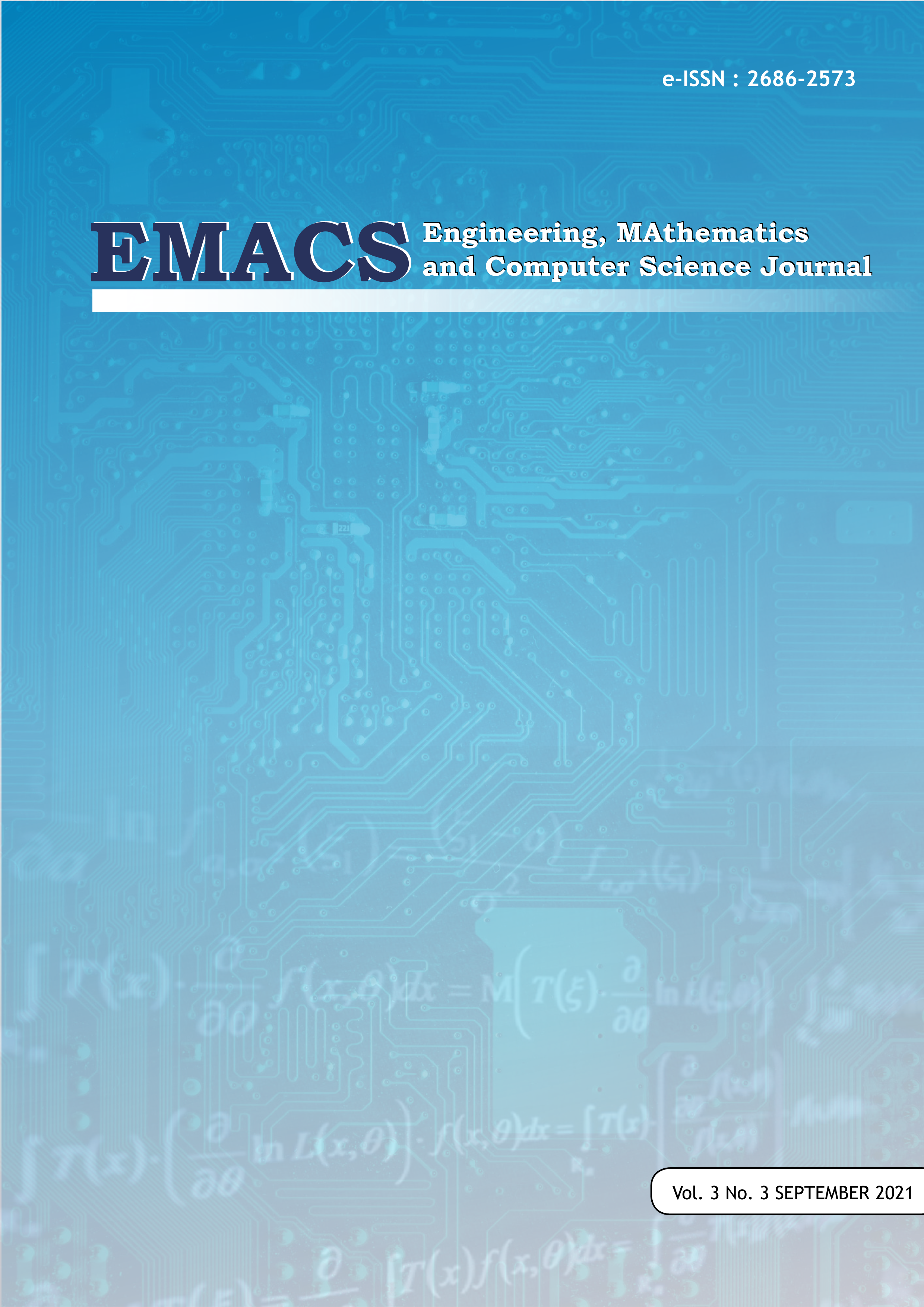Implementation of Optical Character Recognition and Voice Recognition of House of Words (How) Dictionary Application on Android Platform
DOI:
https://doi.org/10.21512/emacsjournal.v3i3.7418Keywords:
Android, Dictionary, Optical Character Recognition, Speech-To-Text, Text-To-Speech, Voice RecognitionAbstract
People with different languages need to be assisted by translator to establish the communication between them. The technology development which exists to fulfill communication needs is digital dictionary as translator tool. The capability of digital dictionary to translate the languages yet has a weakness in putting the input. Through this research, Optical Character Recognition using Tesseract library and Voice Recognition technologies using Google Speech-To-Text are used to replace the previous input system. Based on the implementation and testing, the OCR and Voice Recognition have been successfully recognizing the text and voice input with the amount of similarity of 92,72% for OCR and 95,46% for Voice Recognition. The result of the implementation is expected to help a group of people with different language to communicate easily.
References
I. Oka and S. , Linguistik Umum, Jakarta: Proyek Pembinaan dan Peningkatan Mutu Tenaga Kependidikan: DIKTI, 1994.
W.-s. W. Lian, Heuristic-Based OCR PostCorrection, Chapel Hill, 2009.
H. Bunke and P. S. P. Wang, Handbook of Character Recognition and Document Image Analysis, USA: World Scientific Publishing Co. Pte. Ltd., 2000.
L. Eikvil, Optical Character Recognition, Oslo, Norwegia: Norsk Regnesentral (Norwegian Computing Center) Blindern, 1993.
A. Jain, A. Dubey, R. Gupta, N. Jain and P. Tripathi, “Fundamental Challanges to Mobile Based OCR,†Howarh: Tuhin Mallick, vol. 2, no. 8, 2013.
A. Charisma, “Sistem Verifikasi Penutur Menggunakan Metoda Melfrequency Cepstral Coefficients-Vector Quantisation (Mfcc-Vq) Serta Sum Square Error (Sse) Dan Pengenalan Kata Menggunakan Metoda Logika Fuzzy†2013.
R. Smith, “An Overview of The Tesseract OCR Engine,†in Int. Conference on Document Analysis and Recognition (ICDAR), Washington DC, 2007.
C. Patel, A. Patel and P. Dharmendra, “Optical Character Recognition by Open Source OCR Tool Tesseract: A Case Study,†International Journal of Computer Application, vol. 55, no. 10, 2012.
R. B. Reddy and E. Mahender, “Speech To Text Conversion Using Android Platform.,†International Journal of Engineering Research and Application (IJERA), vol. III, no. 1, 2013.
S. Iizuka, K. Tsujino, S. Oguri and H. Furukawa, “Speech Recognition Technology and Applications for Improving Terminal Functionality and Service Usability,†vol. 13, no. 4, p. NTT DOCOMO Technical Journal, 2012.
A. Zenal, Buku Pintar Google, Jakarta Selatan: Media Kita, 2011.
W. Komputer, The 40 Best Java Applications, Jakarta: PT. Elex Media Komputindo, 2010.
M. R. Spiegel and L. J. Stephens, Statistics, Jakarta: Erlangga, 2004.
Downloads
Published
How to Cite
Issue
Section
License
Copyright (c) 2021 Engineering, MAthematics and Computer Science (EMACS) Journal

This work is licensed under a Creative Commons Attribution-ShareAlike 4.0 International License.
Authors who publish with this journal agree to the following terms:
- Authors retain copyright and grant the journal right of first publication with the work simultaneously licensed under a Creative Commons Attribution License - Share Alike that allows others to share the work with an acknowledgment of the work's authorship and initial publication in this journal.
- Authors are able to enter into separate, additional contractual arrangements for the non-exclusive distribution of the journal's published version of the work (e.g., post it to an institutional repository or publish it in a book), with an acknowledgment of its initial publication in this journal.
- Authors are permitted and encouraged to post their work online (e.g., in institutional repositories or on their website) prior to and during the submission process, as it can lead to productive exchanges, as well as earlier and greater citation of published work.
USER RIGHTS
All articles published Open Access will be immediately and permanently free for everyone to read and download. We are continuously working with our author communities to select the best choice of license options, currently being defined for this journal as follows: Creative Commons Attribution-Share Alike (CC BY-SA)





